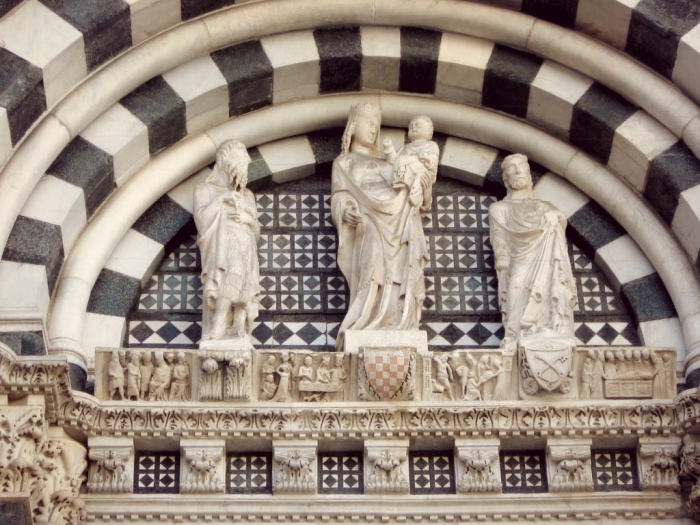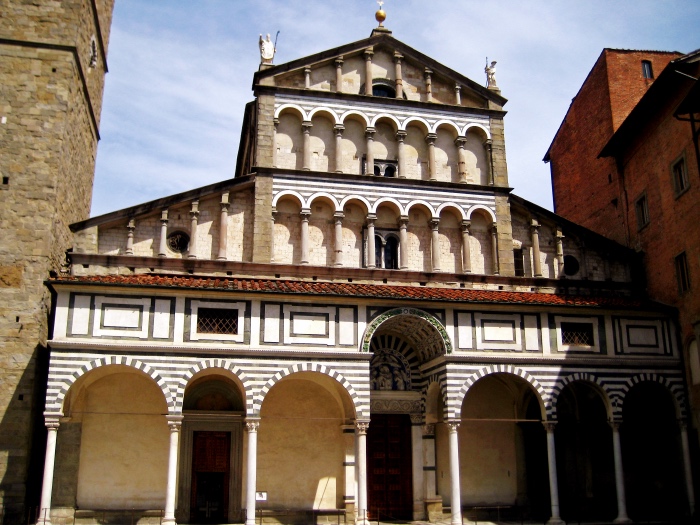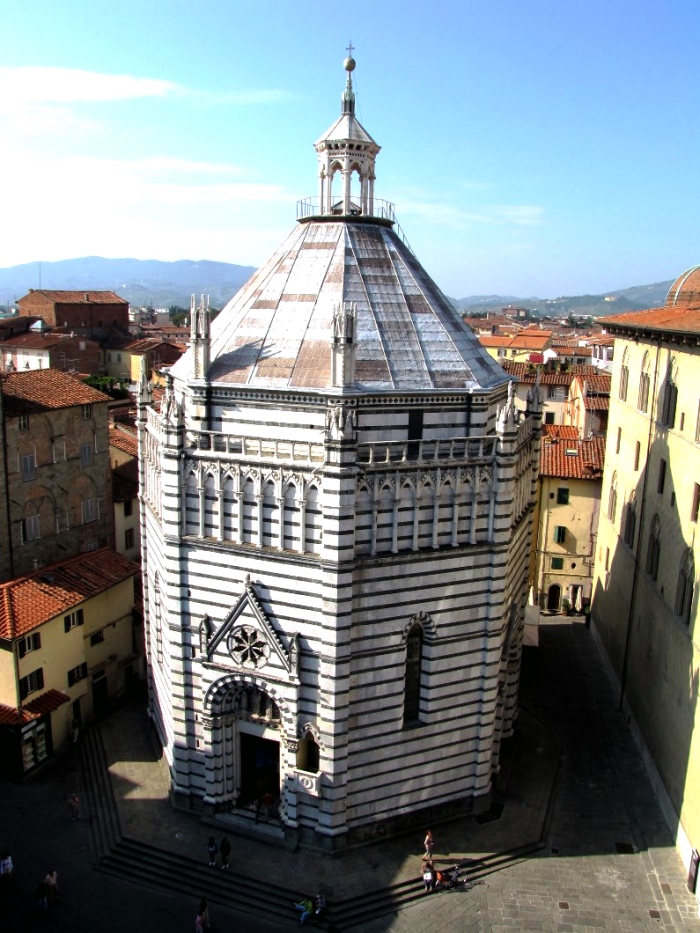
Things to see in Pistoia. Detail of Baptistery of San Giovanni in Corte.
Things to see in Pistoia: Italy’s Capital of Culture for 2017.
Things to see in Pistoia. The 2016 Italian Capital of Culture is Mantua, a Renaissance masterwork, but Pistoia will be Italy’s Capital of Culture for 2017. And the city is ready to be discovered.
I talked about my journey to Mantua and things you must see in the homeland of the Gonzaga family. In 2017 I will talk about Pistoia, its Romanesque and Renaissance monuments, its museums, and its villas.

Things to see in Pistoia. Cathedral of Saint Zeno, Pistoia.
The idea of holding an annual competition for the Italian Capital of Culture emerged after Matera’s success in the selection for the 2019 European Capital of Culture. An unexpected victory which has been the incentive to find out that Italy is made up of several little-known cities waiting to be discovered.
Pistoia is located between Florence and Pisa, and, like Mantua, you have to go there expressly to visit it.
You go to Pistoia for a purpose, and there you’ll discover things you couldn’t even imagine.
The most ancient collection of laws and rules at the time of medieval communes was written here; big families of merchants and bankers were born in this territory; Andrea della Robbia left his glazed terracotta in the loggiato of the cathedral, which hosts one of the largest works of medieval goldsmithing.
But in Pistoia you can also admire the unique frescoes by Giovanni Boldini, painted on commission from his patron for Villa Falconer (La Falconiera).
I touched on these frescoes in the post I dedicated to the exhibition “Boldini. Lo spettacolo della modernità” (“Boldini. The show of modernity”), where were extraordinarily on display.
Things to see in Pistoia
Pistoia is a city you should discover slowly, but you need a list of things to see.
Piazza del Duomo (Duomo Square) is the heart of the city, and the seat of its most important monuments: the Palazzo Pretorio, the Battistero (Baptistery) and the Cattedrale di San Zeno (the Cathedral of Saint Zeno).
The Palazzo Pretorio was the seat of the city courthouse and hosts frescoes and the centuries-old history of Pistoia. The Battistero di San Giovanni in Corte (the Baptistery of San Giovanni in Corte) is an octagonal square building, built in two colours of marble: Carrara white marble and green marble of Prato. The Cattedrale di San Zeno (the Cathedral of Saint Zeno) is a Romanesque masterwork, where architecture and painting belonging to subsequent periods overlap. Inside the church you can admire the silver Altare di San Jacopo (Altar of Saint Jacopo), created between 1287 and 1456 by the most expert goldsmiths at that time.
Maybe, what intrigues me most is the Museo di Pistoia Sotterranea (the Pistoia Underground Museum).
It is an itinerary 650 meters long underneath the city, in order to discover the history of Pistoia, which includes the visit to the smallest Anfiteatro Anatomico (Anatomical theatre) in the world and to the Sala Accademica, a room housing ancient surgical instruments, and which illustrate the history of a city devoted to science.
Eventually, you can’t miss the Museo Civico (the Civic Museum) which represents the whole history of the city in the field of art.
I wait to see her. And you?

Things to see in Pistoia. Giovanni Boldini Frescoes, Villa Falconer (La Falconiera).

Things to see in Pistoia. Baptistery of San Giovanni in Corte.

